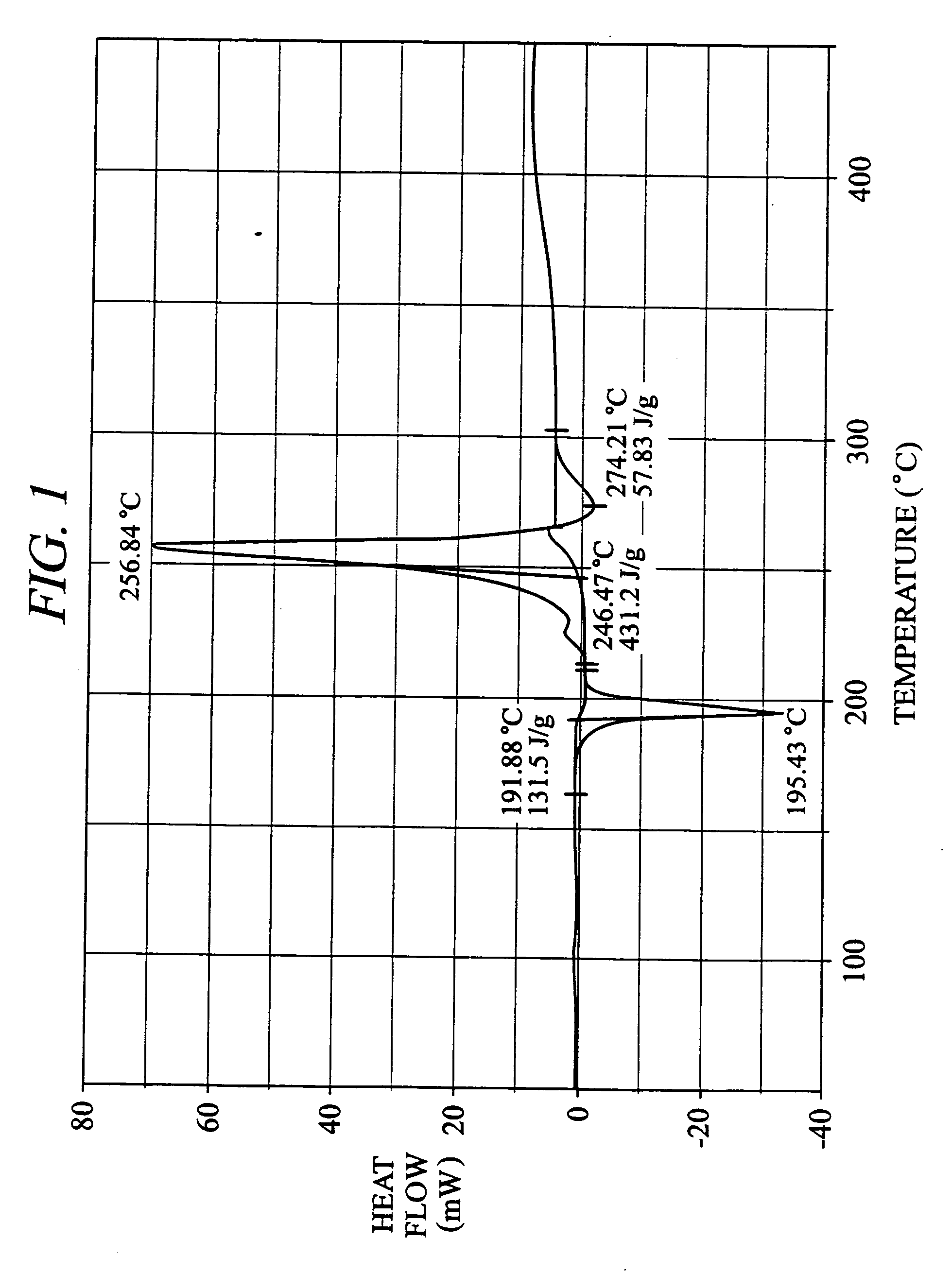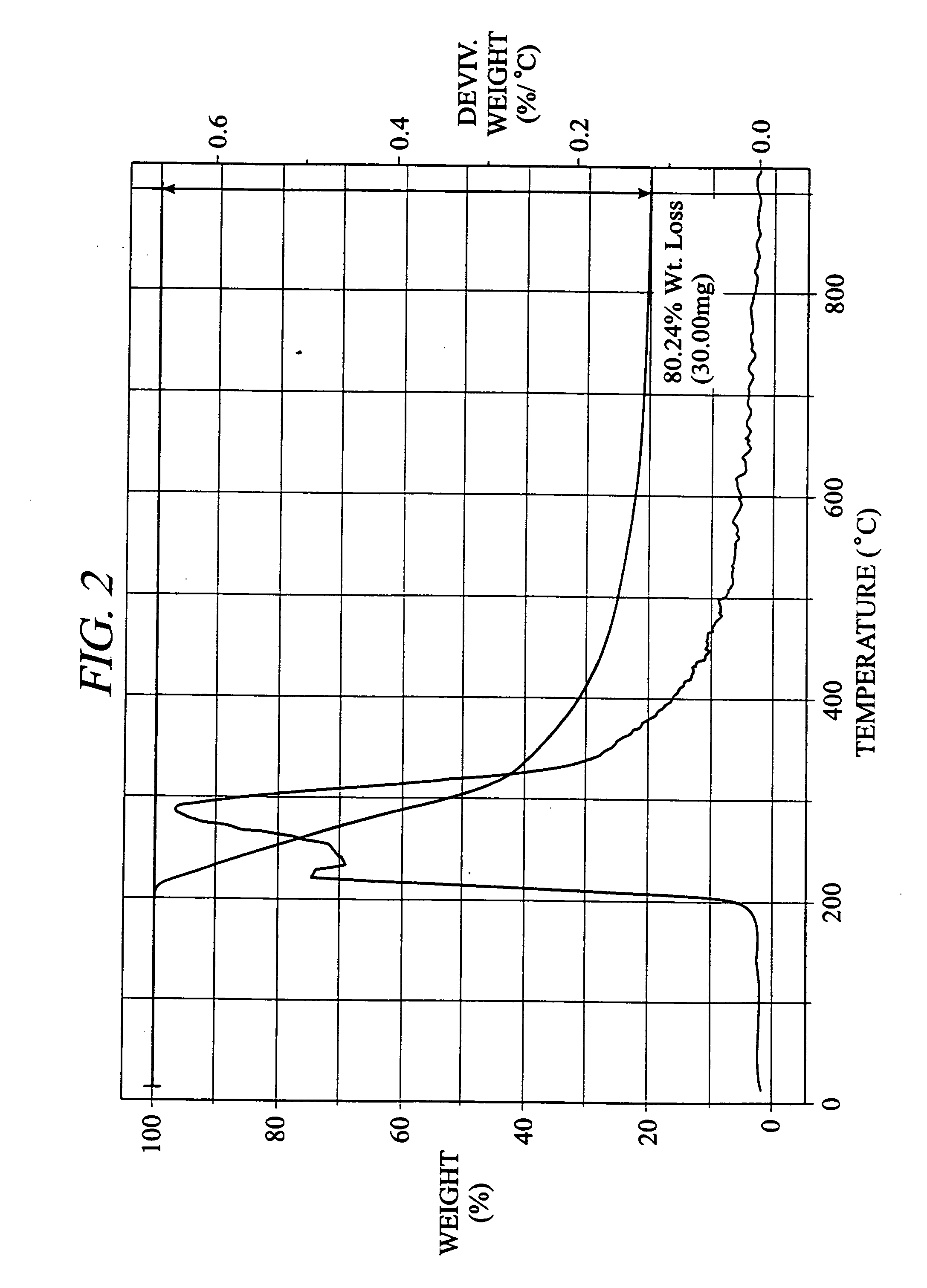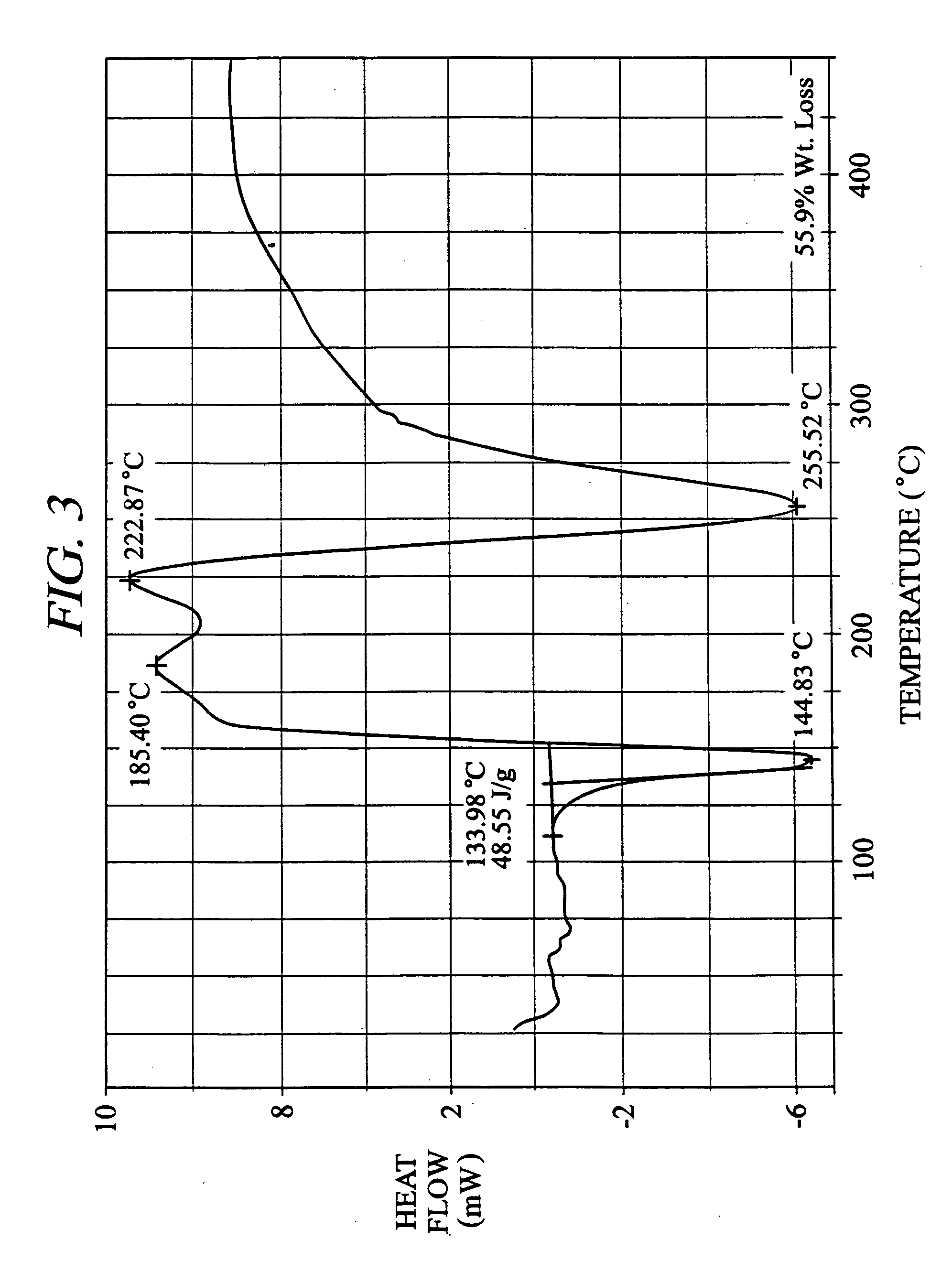Sugar additive blend useful as a binder or impregnant for carbon products
- Summary
- Abstract
- Description
- Claims
- Application Information
AI Technical Summary
Benefits of technology
Problems solved by technology
Method used
Image
Examples
example 1
[0032] This example demonstrates the effect of different additives on the carbon yield obtained from the carbonization of sucrose.
[0033] To a 27% solution of sucrose in water, each of the various additives set forth in Table I were added at a level of 1 part additive to 27 parts of sucrose (3.7%). The viscosity of this solution was measured as about 10 cps showing it would be suitable as an impregnant for carbon articles at room temperature. The solutions were heated under vacuum at about 70° C. to remove the water and leave the solid sugar residue containing the dispersed additive. Carbon yield for the pyrolyzed sugar additive blends was measured using the modified Conradson Carbon procedure (MCC). This procedure is described on page 51, Volume II of “Analytical Methods for Coal and Coal Products”, C. Carr, Jr. Academic Press (1978). The results in Table I show that carbon yield, or amount of residual carbon, was increased by up to 88% by use of the additive. Inspection of the car...
example 2
[0034] This example demonstrates the effect of various additives on the curing reactions of sucrose.
[0035] The curing process for sugars can be demonstrated using thermal analysis techniques: differential scanning calorimetry (DSC) and thermogravimetric analysis (TGA). FIG. 1 shows a DSC curve for sucrose without any additive. The DSC was performed using a pressure cell maintained at 800 psi argon pressure and a heating rate of 10° C. / minute. The use of pressure reduces the effects of volatilization to more clearly define the reaction exotherm. The TGA was carried out at atmospheric pressure in an argon atmosphere at a heating rate of 10° C. / minute.
[0036] The DSC curve shown in FIG. 1 for sucrose without additive exhibits an endothermic peak at about 195° C. for melting of the sucrose and an exothermic peak at about 256° C. resulting from the curing reaction.
[0037] The TGA curve for sucrose, shown in FIG. 2, shows that weight loss commences about 200° C. and continues during the ...
example 3
[0042] This example demonstrates the effects of additives on the curing of fructose and glucose.
[0043] A 50% solution of the monosaccharide fructose in water was prepared by combining 50 grams of fructose and 50 grams of water. To a portion of this solution, ammonium chloride was added at a level of 2 parts ammonium chloride to 50 parts fructose. The viscosity of this solution at room temperature was about 10 cps, indicating it was suitable for use as an impregnant. Next, water was removed from the solution by heating under vacuum at about 70° C. MCC measurements for the residues showed an expected 21% for the fructose alone and 37% for the fructose containing 4% of ammonium chloride.
[0044] A similar example was carried out using the monosaccharide glucose. Aqueous solutions containing 40% glucose both with and without the addition of 4 parts of ammonium chloride were prepared. Following removal of water, the glucose residue as expected had an MCC of 20%, while the glucose with ad...
PUM
| Property | Measurement | Unit |
|---|---|---|
| Fraction | aaaaa | aaaaa |
| Percent by mass | aaaaa | aaaaa |
| Temperature | aaaaa | aaaaa |
Abstract
Description
Claims
Application Information
 Login to View More
Login to View More - R&D
- Intellectual Property
- Life Sciences
- Materials
- Tech Scout
- Unparalleled Data Quality
- Higher Quality Content
- 60% Fewer Hallucinations
Browse by: Latest US Patents, China's latest patents, Technical Efficacy Thesaurus, Application Domain, Technology Topic, Popular Technical Reports.
© 2025 PatSnap. All rights reserved.Legal|Privacy policy|Modern Slavery Act Transparency Statement|Sitemap|About US| Contact US: help@patsnap.com



